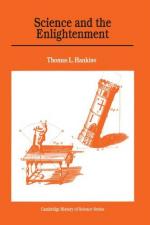
|
| Name: _________________________ | Period: ___________________ |
This quiz consists of 5 multiple choice and 5 short answer questions through Chapter 4, Chemistry.
Multiple Choice Questions
1. In the early years of the Enlightenment, the strongest support on the Continent for Newton's philosophy came from ________.
(a) Germany.
(b) America.
(c) Holland.
(d) Italy.
2. Acknowledging the existence of the gaseous states was a prerequisite for explaining combustion, the central problem of the ________, according to the narrator in chapter 4.
(a) French Revolution.
(b) Industrial Revolution.
(c) Chemical Revolution.
(d) Scientific Revolution.
3. In Chapter 4, who found that many liquids cooled on evaporation: the more volatile the liquid, the greater the amount of cooling?
(a) Black.
(b) Cullen.
(c) Nollet.
(d) Wallerius.
4. ________'s emphasis on the repulsive or expansive property of air, led naturally to an emphasis on the expansive properties of the even more subtle fluids of heat and electricity.
(a) Boerhaave.
(b) Hales.
(c) Musschenbroek.
(d) Aristotle.
5. The narrator explains in Chapter 4 that the most popular textbooks in France during the first half of the eighteenth century were those of ________ and ________.
(a) Cullen / Black.
(b) Boerhaave / Lemery.
(c) Stahl / Marggraf / Rouelle.
(d) Roi / Lavoisier.
Short Answer Questions
1. In 1769, ________, a student of Joseph Black's at Glasgow, measured the repulsion between charges with an apparatus that balanced the electrical repulsion against gravitational attraction.
2. Who was France's greatest hero of the Enlightenment partly because he was from England, the source of free thought and liberty and partly because he had solved the riddle of the planets, showing that their motions obeyed the same laws as motions on earth?
3. The crucial realization of the Chemical Revolution was that ________ was not a single element but a physical state that many chemical substances could assume, according to Chapter 4.
4. In Chapter 3, what was the name of the experimental tradition began in Western Europe during the Renaissance?
5. The influx of German texts coincided with the revival of French chemistry under ________, who began his famous chemical lectures at the Jardin de Roi in 1742.
|
This section contains 309 words (approx. 2 pages at 300 words per page) |

|




